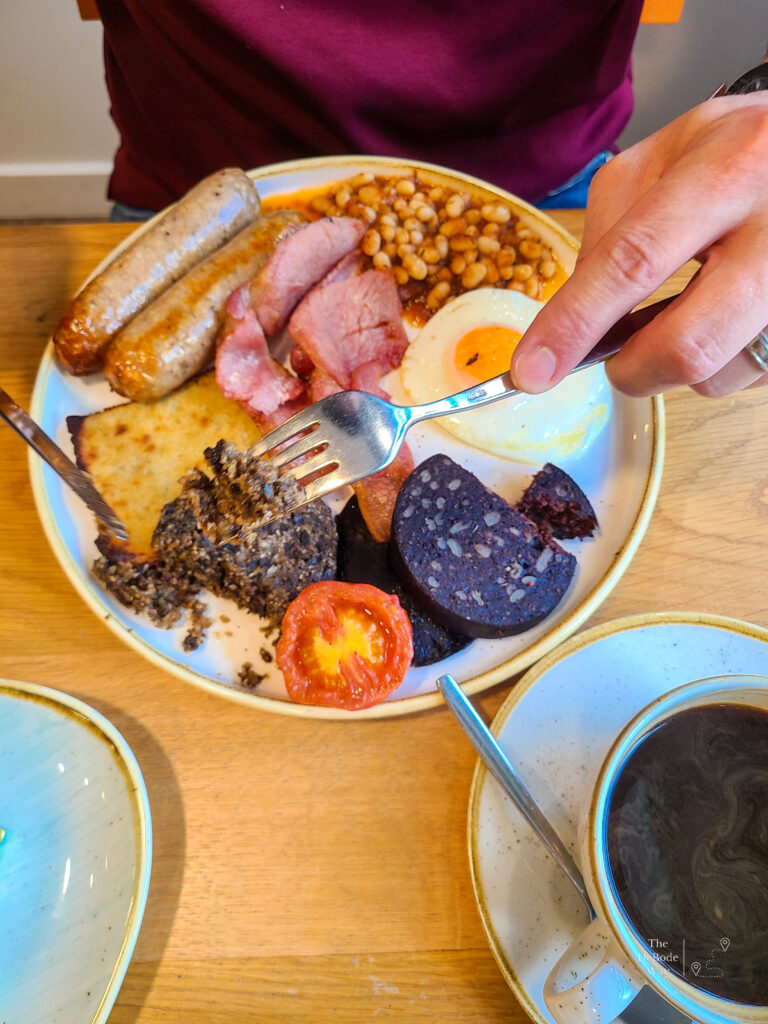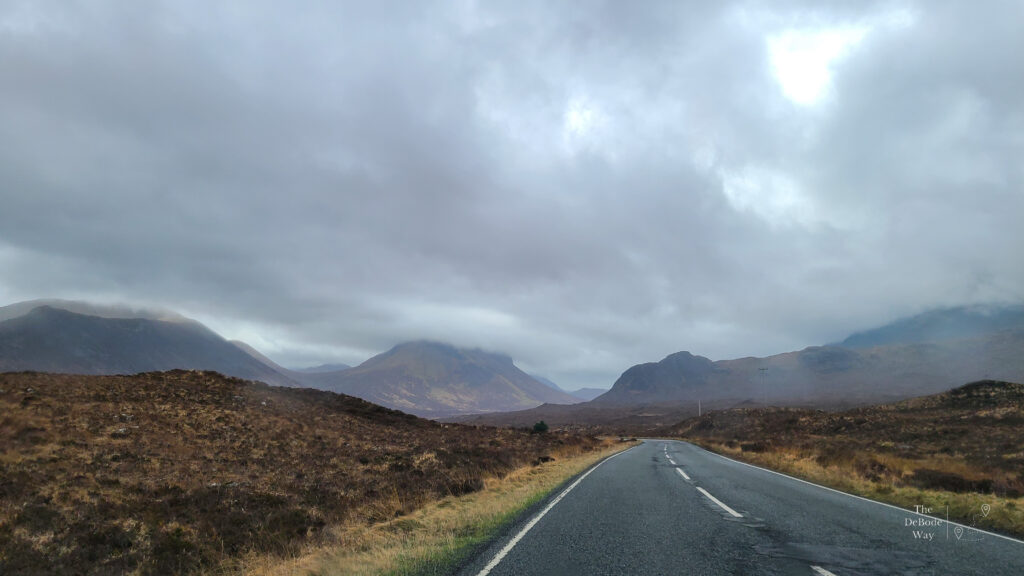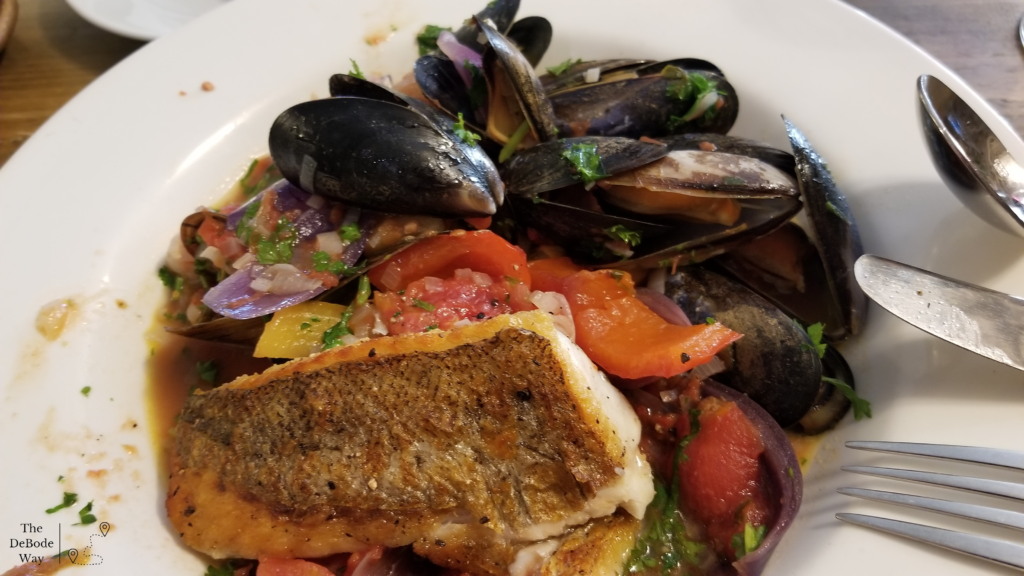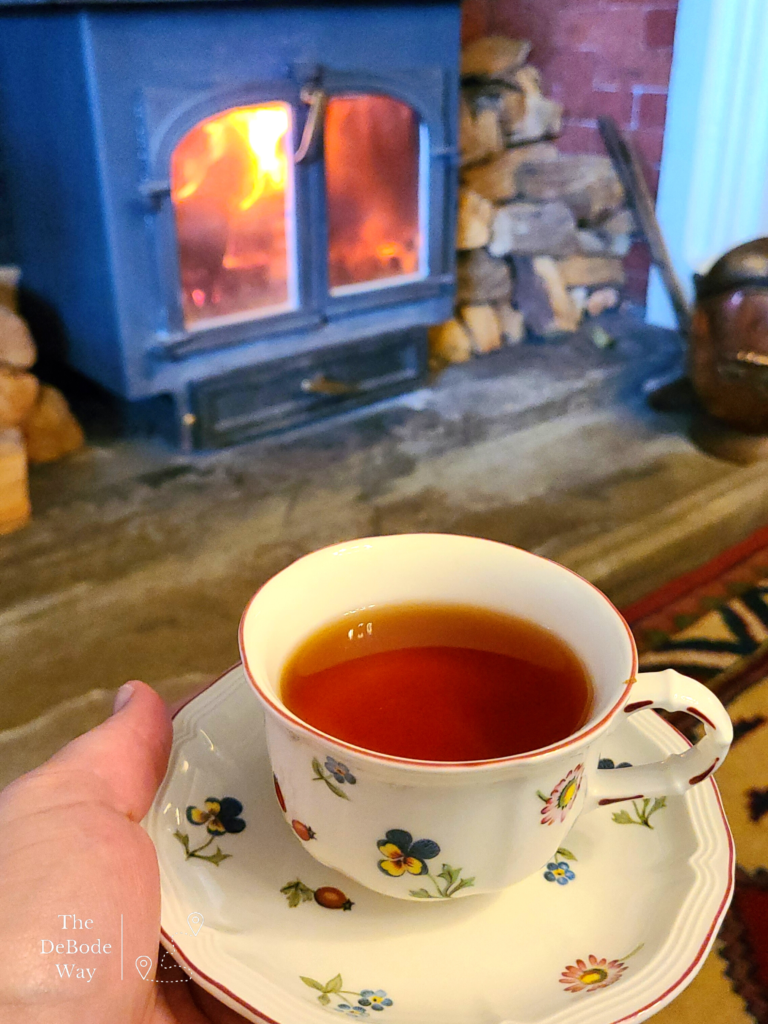For almost as long as we’ve been going to Scotland, Jason’s parents have said they really want to go. Maybe it’s the omnipresent Scotch, our family castle (it’s a long story…probably for a different post), the famed Highlands (and maybe their coos), all of the above, or something else that’s captured their attention. As a general rule, we’re pretty much always happy to have folks come with us, even if they go by ‘Mom and Dad.’ Unfortunately, work schedules and life in general just never let this work out…until now. This year, while everyone else is stuffing themselves with turkey (which…is also stuffed…weird), we’ll be off on our next adventure showing Jason’s parents all the sights of Scotland. More on this later.
As we *finally* start getting ready for our next hop across the pond to our favorite place (we might be leaving in two days and haven’t started thinking about what to take yet), we’re reminded of the questions we’re frequently asked about Scotland. And so, to make things easy for all involved, we’ve made this Scotland FAQ page to keep the questions and answers all in one place. We’ll add to this as we get more questions and think of new/better answers.

FAQ 1: What’s the fascination with haggis? Also, what is it?
This is probably one of the more common questions we’ve had. First thing first: haggis is good stuff, so we’d definitely encourage you to try it. We need to clarify: *real* haggis is good. Yes, it’s possible to find canned haggis and, well, do us all a favor and leave it at the store. Truth be told, it’s not as bad as you might think, but it’s also nowhere near as good as the real stuff.
Okay, so what is it? Traditionally, haggis is made with sheep organs, seasonings, stock, and some kind of cereal grain, most often oatmeal. That’s all mixed together, packed into a sheep’s stomach, and then cooked. Still with me? Good. In the end, haggis tastes like sausage, only better. It’s really more of a mind game, but believe us it’s worth pushing past your notions about organ meat, as that’s not at all what it tastes like. Most often, you’ll find haggis as part of a Full Scottish breakfast, which is also amazing.
The neat thing about haggis is that there’s no single recipe for it. Instead, everywhere you go in Scotland has its own spin on the above main ingredients. That means it’ll taste a little different in each B&B and restaurant and in the different parts of Scotland where different spices, types of fat, cereal grains, and the like are easier to come by. Even if you only try it once, give it a go and see what you think. Our bet is it’ll be so much better than you’re expecting.

FAQ 2: Is it weird driving on the *wrong* side of the road?
We work hard to avoid calling it the *wrong* side of the car or road, both of which you’ll experience if you’re adventurous enough to rent a car (friendly reminder: they refer to this as ‘hiring’ a car, not renting one). Instead, just call it like it is: they drive on the right side of the car and the other side of the road. Nothing worse than going to a foreign country and telling them what they do is wrong. From their perspective, what we do is wrong.
All that being said, it does take a minute to get yourself reoriented to driving, so build that into your timetable. If you’re anything like me, when I’m driving I very heavily rely on the solid line on the left side of the road to keep my bearings; that’s hard to do when you’re driving on the opposite side of the car. Also keep in mind that most rental cars in Scotland are manuals, not automatics. And yes, that means you’ll be shifting with your left hand, not the right as you’d do in the US. For this reason (and others), we always specifically rent an automatic. Importantly, you’ll need to make sure you reserve your car in advance, as most of the lots don’t have many automatics sitting around.
As for driving, that comes a bit more naturally, at least to me. Mostly you’re just going with the flow of traffic, however odd it might seem at first. They’re also good about putting up signs (WRONG WAY!) to keep you heading in the right direction. And when in doubt, just look at the road: much of the time there are arrows and other directions written on the road you’re driving on. Writing upside-down? That probably means you’re going the wrong way.

FAQ 3: Trains? Really?
We’ll admit that trains in the US don’t have the best reputations, either for their safety or efficiency. Fortunately, that couldn’t be further from the truth in Scotland. Really, this is true of most of the countries we’ve been to in Europe and the UK, not just Scotland. Trains are safe and clean, convenient, and are usually pretty cost-effective. There’s also an increasing number of high-speed trains, meaning you can get to where you’re going even faster than before. Most of the time the trains have food cars where you can grab a snack or drink, and bathrooms spaced out between the different cars.
One thing we had some trouble with was understanding the different classes of tickets. Sometimes your ticket gets you access to a specific car, but you can pick whatever seat you want. Other times your ticket is for a specific seat in a specific car, and this isn’t always obvious. There are also different fare classes you can buy: the lower classes are pretty basic affairs, while the first- and second-class seats are generally more comfortable and have fewer people in each car. The prices are all over the place, but we’ve found they’re usually very reasonable. The schedules and stations aren’t always when or where you need them to be, and there are often several stations in a given city, so it pays to do a little homework to make sure you’re on the right route and going to the right station.

FAQ 4: What’s the food like over there?
One of the things we really like about Scotland, and again this is fair for most of Europe as well, is the food situation. Tasha has a few food sensitivities that make eating out a challenge when we’re in the US. However, many of the additives and preservatives used in US food are illegal in the UK and Europe, so not something we need to worry about, at least usually. As for the more common sensitivities (e.g., gluten, soy, dairy, etc.), they are all very clearly marked on every menu we’ve seen on our travels (bold words, symbols, etc.). It’s also very common for the host/hostess to ask about dietary restrictions when you make a reservation and/or when seating you for your meal. That information is passed onto your server who has a great working knowledge of the menu and can point you to/away from different options. It’s also not unheard of for the chef to customize a dish for your needs, we’ve found this is especially true at smaller pubs and in B&Bs.
Just to clarify: we’re not saying you don’t need to pay attention to your food allergies when traveling. That’s just silly. However, we’ve found it’s much easier to eat out in Europe than it is in the US. So, if that’s what’s been holding you back, fret not! You may actually be better off in the end!

FAQ 5: Okay, but doesn’t it always rain in Scotland?
True enough, Scotland isn’t exactly an arid climate. They do get their fair share of rain; some might even say more than their fair share. However, it doesn’t usually rain the *entire* time we’re there. Most often there is rain in the forecast almost every day, but that usually means it’ll rain for about 15-20 minutes at some point during the day, and that’ll be it. Sure, some days they get more rain and it’s a little dreary, but there are lots of days when it doesn’t rain at all.
If you’re in town and it starts raining, that’s a great excuse to stop into a pub for a cup of tea and a snack (we’re kidding, you never need an excuse for a cup of tea in the UK). If you’re out on a hike, that’s why we advocate for taking waterproof jackets and shoes. You just never know when you might find a wet spot or when the heavens may open up. And if it really does end up raining all day, there’s likely a roaring fireplace with comfy chairs and couches nearby. Oh and tea, there’s always tea.

FAQ 6: What’s the rule on tipping when eating out?
This is one of the ways Americans tend to distinguish themselves when visiting Europe. When we’re back home in the US, because your server often makes less than minimum wage, it’s common practice to tip somewhere around 20% of your bill. However, be advised that servers in Europe often make a living wage, and because of this, the tipping customs are a bit different.
Most often, we tip about 10%, but even that’s a bit much in some parts of Europe. When Jason goes to Spain, the norm is to leave a 1-2 Euro tip regardless of how large your bill is (there are probably exceptions for really, really fancy meals, but we don’t eat like that most of the time). Similarly, when we’re in the UK, tipping a few pounds for lunch is fairly standard, as is the 10% tip for dinner. Also, make sure you check your bill – they may have already included the tip.




